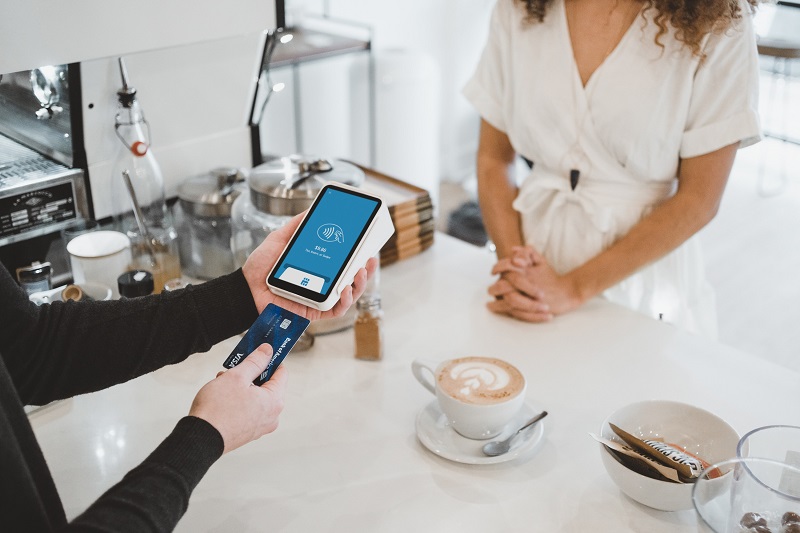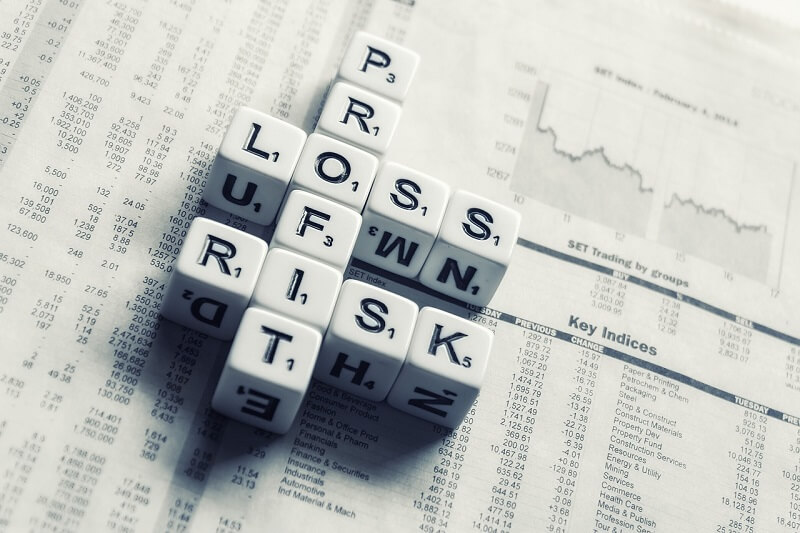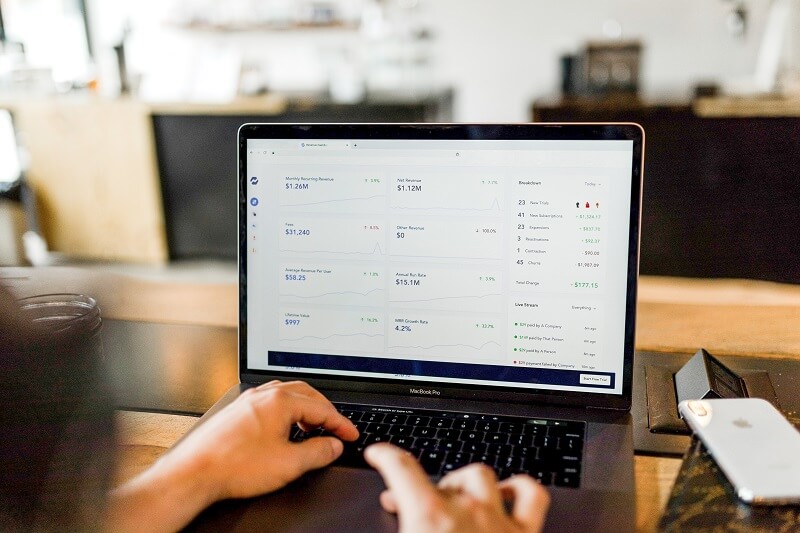When you are planning to open your dream restaurant, you go through several aspects – food, staff, layout, interiors, menu design, cutlery, kitchen equipment, and so on, but bookkeeping often isn’t one of them. As if the restaurant business was not competitive enough, a recent study suggests that over 52% of restaurant owners consider operating costs and food costs as the biggest challenges in running their restaurants.
Restaurant bookkeeping not only helps owners track their inventory, profits, and expenses but help in tax calculation and auditing too. More importantly, it helps identify where your money is going and how you can maximize your profits.
So, what if accounting is not your forte and you don’t know anything about restaurant bookkeeping? Almost all businesses use some type of accounting software to track their incomes and expenses. So, why not restaurants? With some basic understanding and the right accounting software, you can stay ahead of your competition and increase your profitability. Read on to know how you can master bookkeeping for a restaurant business like a pro:
How to Handle Bookkeeping for A Restaurant?
Whether you plan to outsource your accounting activities or do it yourself, efficient bookkeeping starts with you. Here is how you can carry on restaurant bookkeeping effectively in 5 steps:
1. Use POS to record your daily sales

Points of sales (POS) systems have turned out to be a huge blessing for restaurant owners and managers. POS systems have bridged the communication gap between your kitchen and dining staff. A POS system serves many functions – tracking your sales, managing inventory, collecting feedback, analyzing customer preferences, and many more.
- Record your per-day sales entries: In any restaurant, customers either pay by card (or some other digital medium) or cash. By recording your daily sale entries, you are trying to replicate how your deposits hit the bank.
- Prepare a Sales Report: A sales report usually summarizes the daily sales. Although most restaurant POS systems automatically generate a sales report daily, you can customize the report to reflect more information on the dining preferences of your guests.
- Maintain a Daily Sales Journal: Once your daily sales report is ready, you can update the sales journal to make a mental note for different aspects of your sales. For example, while bookkeeping for bars, you might want to record beverage and food sales separately to analyze the average spending by a customer.
2. Manage Accounts Payable
Now that you know your daily sales, the next step in your restaurant bookkeeping would be to set up accounts payable. After all, you want to keep your vendors and suppliers happy if you wish to continue working with them.
- Make all the entries for pending payments at least twice a week and pay your vendors once every week.
- Before making the payment, crosscheck the bills. Make sure that each purchase order matches up with its receiving order.
- Whether you pay the vendors online or through a check, ensure that the corresponding entry in your accounting system is marked correctly.
3. Work on a Payroll
To keep your staff happy, you must pay them for their work – timely and correctly. Payroll is the process of managing, calculating, and disbursing paychecks for your employees.
- The restaurant is a tricky business, and salaries depend on several variables. For example, the basic salary of any employee will depend on their experience, expertise, roles, responsibilities, etc.
- Similarly, some employees like managers or chefs will have a weekly or monthly salary while others, like waiters, bartenders, and cleaners, will get paid on an hourly basis.
- In a nutshell, working on payrolls can be tedious as there are several factors to consider. Any miscalculation in paychecks might lead to unhappy employees leaving your team.
- Moreover, incorrect payroll might even have tax implications, and you might incur penalties or interests.
- Outsourcing your payroll or investing in an accounting service is an affordable way to ensure transparency, consistency, and accuracy.
4. Always do Reconciliation
Reconciliation is an accountancy term for matching all your financial transactions by looking at different sets of balances and records.
- Reconciliation is the only way to ensure that you have accounted for all your financial transactions from banks, credit cards, payroll, loans, credit lines, etc.
- You minimize errors due to faulty entries, lost checks, and incorrect deposits through reconciliation and ensure that your financials are in order.
5. Maintain Financial Reporting

Financial reporting helps you gauge the status of your business. The restaurant industry works on tight margins, and financial reporting helps analyze where your business is going. Some of the key financial reporting parameters include:
- Profit & Loss statement
- Balance Sheet
- Cash Flow statement
- Sales vs. cost of goods
How To Perform Cost Calculation for Restaurant Bookkeeping
- Cost of Goods sold: It refers to the ingredients and products you buy to prepare food and beverages. Ideally, the cost of ingredients is roughly 30-40% of the total sales.
- Cost of labor: It comprises all expenses towards your staff including:
- Hourly wages for your servers
- Salary for chefs, managers, etc.
- Payment or allowances for uniforms, tips, gratuities, unemployment taxes, etc.
- Occupancy and Equipment cost: It consists of the cost of owning or renting the place as well as expenses done for the infrastructure like:
- Mortgage, rents, property taxes, insurance, signage.
- Utility bills like electricity, water, and municipal taxes.
- Cooking equipment, freezers, ovens, etc.
- Maintenance and servicing cost.
- Restaurant furniture Cost: Restaurant furniture requires a significant expenditure and consists of payments for
- Buying restaurant tables and chairs
- Repairing and maintenance cost of restaurant chairs, tables, barstools, etc.
- Marketing cost: Now that your restaurant is open to welcome customers, you would have to spread the word. Marketing costs include:
- Print ads in newspapers, pamphlets, or billboards
- Digital marketing through social media influencers
- Audio-video advertisements on radio, local TV, etc.

Best Restaurant Bookkeeping Software Options
Now that you understand the importance of bookkeeping for restaurant business, here are the best accounting software for restaurants:
1. Restaurant365
- Cloud-based software that integrates restaurant bookkeeping with other management tools like ordering, invoicing, staff scheduling, etc.
- While it does not offer payroll services, you can integrate with other vendors, POS systems, etc.
- Monthly prices for Restaurant365 start around $249 per location and goes up to $459 per location
2. QuickBooks Online
- Easy to use program and ideal for restaurant owners with little accounting knowledge or bookkeeping experience
- It offers impressive features like income & expense tracking, invoicing, inventory management, etc., with add-on payroll services, and is compatible with most POS systems
- Monthly pricing for QuickBooks Online ranges from $25 – $100
3. Touch Bistro
- iPads-based POS system built by and for restaurant owners
- Effortless to set up and offers features like inventory management, ingredient-based food cost calculation, table management & ordering, payment processing, etc.
- The monthly plans for Touch Bistro start at $50 and go up to $229
4. Xero
- Cloud-based simple accounting software and alternative to QuickBooks Online.
- Offers tools for inventory management, invoicing, reconciliation, income & expenses tracking, payroll processing, financial reporting, etc.
- Xero is ideal for small restaurant or café bookkeeping, and is available at monthly charges starting from $11, while the top tier plan costs $62.
5. ZipBooks
- Simple, generic accounting program that you can use for any industry
- Some of the features of ZipBooks include financial reporting, vendor & customer management, expense tracking, etc.
- ZipBooks is probably the most budget-friendly option of bookkeeping for small restaurants. It has a free version with limited capabilities, while the paid options range from $15 – $35 per month
6. Davo
- You can integrate Davo with your POS to automate the sales tax process, and the program ensures that all your taxes are paid correctly and on time
- Although it does not have many features like other software mentioned above, you can use it as an add-on to other programs
- Davo offers a one-month free trial period and $39.99 per month per location after the trial period
7. Plate IQ
- Plate IQ is the best restaurant accounting software for automation and works with multiple industries like groceries, hotels, etc.
- Plate IQ has several unique features like reconciling vendor invoices, automated invoicing, problem alerting, emailing, spend reporting, etc.

FAQ
Restaurant owners perform bookkeeping either by:
Hiring a full-time accountant
Purchasing an accounting software
Outsourcing the bookkeeping to an accounting firm
A restaurant bookkeeper manages and oversees the finances and performs budgeting. They are in charge of analyzing a restaurant’s income & expenses and offers advice on increasing profitability by reducing food, labor, or other overhead costs.
Any business is about making the most of your strengths and outsourcing the weaknesses. Instead of having a dedicated bookkeeper or doing it yourself, it is sensible to outsource the job, especially while bookkeeping for small restaurant. This way, you can focus on your passion for running and managing your restaurant.

